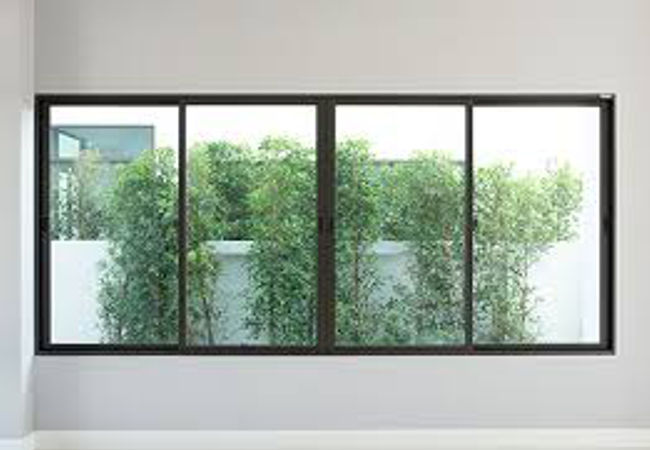Introduction
Energy efficiency is a practical goal for many homeowners and builders in India. Reducing energy use helps lower costs and supports long-term sustainability. One key area where energy performance can improve is through window systems. Well-designed aluminium windows help control indoor temperatures and reduce energy loss, making them effective in efficient homes.
Key Features of Aluminium Windows
Aluminium windows are known for their structural strength, design flexibility, and material efficiency. These features contribute to energy savings and modern design preferences.
Robustness and Lightweight Nature
Aluminium is strong yet lightweight, making it ideal for window frames that must support large panes of glass. This strength also allows for slim designs requiring less structural bulk without compromising durability. The reduced weight supports ease of installation and handling.
Modern Aesthetic Design
Contemporary Aluminium Window Design often includes slim sightlines and minimalist framing. These elements enable more natural light to enter, enhancing daylighting and reducing reliance on artificial lighting. Due to their versatility and clean visual appeal, such modern window door design options are commonly used in both new construction and renovation projects.
Energy Efficiency Aspects
Aluminium is naturally conductive, but advancements like thermal break technology help manage this. Placing a non-conductive barrier between interior and exterior aluminium components reduces heat transfer, limiting indoor heat gain in warmer months and heat loss in cooler periods. Surface treatments, such as TEXGUARD coatings, add durability and reflect solar radiation, reducing surface temperatures and indoor heat load. In addition, EPDM gaskets and well-engineered sealing blocks support airtightness, limiting unwanted air exchange that can affect cooling or heating performance.
Benefits of Energy-Efficient Aluminium Windows
Efficient windows bring measurable benefits that go beyond aesthetics.
Reduction in Energy Bills
Limiting heat gain during summer and retaining warmth during winter reduces demand on climate control systems. This can help lower monthly electricity consumption.
Must Read: The Benefits of Left-Right Opening with Design-Forward Folding Glass Doors
Improved Indoor Comfort
With reduced air leaks and better insulation, rooms maintain stable temperatures, creating comfortable living spaces without sharp temperature fluctuations.
Environmental Impact and Sustainability
Aluminium is a recyclable material with a long service life. Using high-performance windows made from aluminium helps reduce waste and supports energy efficiency, both contributing to sustainability goals.
Considerations When Choosing Aluminium Windows
Selecting the right window solution depends on performance, fit, and longevity.
Initial Cost vs. Long-Term Savings
While aluminium windows may come with a higher initial price, their long lifespan and energy-saving potential lead to cost advantages over time.
Compatibility with Existing Home Design
The clean appearance of Modern Window Door Design makes it suitable for a wide range of homes, from compact urban flats to larger independent properties.
Maintenance Needs
Aluminium does not corrode or swell. Coated frames need only periodic cleaning. High-quality gaskets and sealants also ensure longer service without major repairs.
Tips for Selecting the Right Aluminium Windows
A few careful checks can make a big difference in performance.
Assessing Energy Performance Ratings
To understand thermal efficiency, look for values like U-factor and SHGC (Solar Heat Gain Coefficient).
Consulting with Professionals for Installation
Accurate installation ensures the full benefit of the design. Pre-engineered systems with fitted hardware often simplify the process and ensure better results.
Checking for Certifications and Warranties
Select windows that meet recognised standards and offer performance-backed warranties for added confidence.
Case Studies: Real-World Savings
Suburban Family Home
A 2,000-sq-ft house in New York replaced single-pane windows with double-glazed aluminium units featuring thermal breaks. They reported a 20% drop in winter heating bills and a 15% reduction in summer cooling costs within the first year.
Urban Condo Retrofit
A city apartment complex installed slim-profile, triple-glazed aluminium windows. Tenants noted improved noise reduction alongside a 30% decrease in energy bills, enhancing both comfort and privacy.
Future Trends in Aluminium Window Technology
Smart Glass Integration
Electrochromic and photochromic glazing allow windows to tint on demand or automatically based on sunlight, further optimizing energy performance without sacrificing views.
Improved Thermal Break Materials
Next-generation insulating materials will reduce frame conductivity even more, pushing U-values lower and unlocking new possibilities for ultra-efficient designs.
Modular Frame Systems
Prefabricated modular windows with snap-in glazing units make installation faster and more precise, minimizing on-site errors and ensuring consistent efficiency.
Conclusion
Aluminium windows offer a winning combination of strength, style, and energy efficiency. With thermal breaks, advanced glazing, and durable frames, they deliver excellent thermal performance that lowers energy bills and enhances comfort year-round. By selecting the right frame profiles, finishes, and professional installation, homeowners can reap environmental and financial benefits while boosting property value. As technology advances—bringing smarter glass and improved thermal breaks—aluminium windows will continue to lead the way in sustainable, high-performance design. Make the switch today and enjoy a brighter, greener, and more comfortable home tomorrow.
Investing in high-performing aluminium window design contributes to energy savings and daily comfort. Features like thermal break technology, durable surface coatings, and EPDM gaskets all support efficiency and reduce long-term energy use. Choosing a well-designed modern window door design suits aesthetic goals and ensures functional advantages in various climates and building types.












